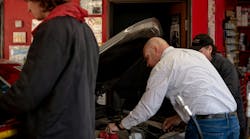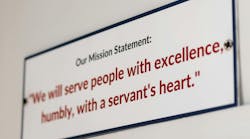The auto industry is looking for a break as fuel economy standards are poised to become even tighter.
So far, automakers have been able to meet tougher emissions and fuel economy standards. But between 2018 and 2025 those standards get much tougher.
And, assumptions that were made in 2012 about gas prices and consumers' willingness to embrace costlier, but more fuel-efficient hybrid, electric and plug-in cars have not panned out to the degree expected.
So, the industry wants existing standards to reflect current gas prices, lower projections of hybrid and electric vehicle sales and changes to what is viewed as unrealistic regulations in California and nine other states for zero-emission vehicles.
But regulators have signaled that they are unlikely to budge, and environmentalists say automakers are already slipping back into old, bad habits under the current standards.
"If they want to weaken the standards, then there is going to be a big battle," said Daniel Becker, director of the Safe Climate Campaign, a Washington organization that promotes efforts to mitigate global warming. "I think there is ample evidence that will come out in the (report) that the standards should be strengthened."
Two federal regulatory agencies, joined by one from California, will issue a draft report that will vastly influence the kinds of cars and trucks that will coming tt auto dealerships.
The report, to be issued jointly by the National Highway Traffic Safety Administration, the U.S. Environmental Protection Agency and the California Air Resources Board, will kick off a yearlong review process. Originally, the report was expected by the end of June. Now, insiders say it could be published as early as this week.
Those agencies based the original fuel economy and greenhouse gas targets on fuel prices that are much higher than the $2 per gallon prices Americans have enjoyed over the past year.
At $2 per gallon, it takes consumers up to eight years to recoup an investment into fuel-efficient vehicle that costs just $1,800 more than a conventional vehicle, "well beyond what most consumers consider worthwhile when buying a new vehicle," according the Alliance for Automotive Manufacturers.
“Automakers are not evaluated based on whether the products they offer consumers meet the government targets; rather, automakers are evaluated based on the products consumers choose to buy," the Alliance says in a report on its website. "So, low consumer interest in high-mileage vehicles presents a serious challenge to the government’s ambitious fuel economy and greenhouse gas targets.”
In 2012, automakers agreed that by the 2025 model year goal they would all achieve a fleet-wide average of 54.5 miles per gallon — or an adjusted real-world average of about 40 mpg — and cut tailpipe carbon dioxide emissions by 35% on the cars and trucks that they sell.
While electric vehicles hogged the headlines for several years as a plethora of new vehicles were developed automakers also dramatically improved the fuel economy of small cars, crossovers, SUVs and pickups by improving the performance of gas-powered engines, developing transmissions with more gears and reducing the weight of their vehicles.
The industry says U.S. regulators have underestimated the cost and difficulty of achieving their vehicle fuel-economy and greenhouse-gas targets for 2025 and are giving California too much power to shape the country’s policies on those issues.
What's more, the regulatory requirements adopted in 2012 were set up to become more aggressive from 2018 to 2025.
As publication of the report draws near, few people with a stake in the outcome were willing to talk about it. Representatives for both NHTSA and EPA declined to comment on the timing of the report or on the discussions. Five automakers contacted by the Free Press either did not respond or referred questions to the Alliance.
“Automakers are seeking a fair, transparent review process that’s driving by current data and complete analyses — especially when there are so many uncertainties in the government’s program as well as the marketplace," the Alliance said in a news release.
The Alliance argues that the industry has more than done its job. Today's cars and trucks are more fuel efficient than they were just a few years ago. Automakers have launched new hybrids and electric vehicles, have improved the fuel economy of standard gasoline engines and have lowered the weight of vehicles of all sizes.
Sales of new hybrid, plug-in hybrid, electric and hydrogen-powered vehicles in the U.S. have increased in recent years but accounted for less than 3% of total industry sales in 2015 and have dropped for the past two years. Meanwhile and vehicles with gasoline powered engines account for 94.7% of vehicles last year, according to the alliance.
This article originally appeared on 13newsnow.





